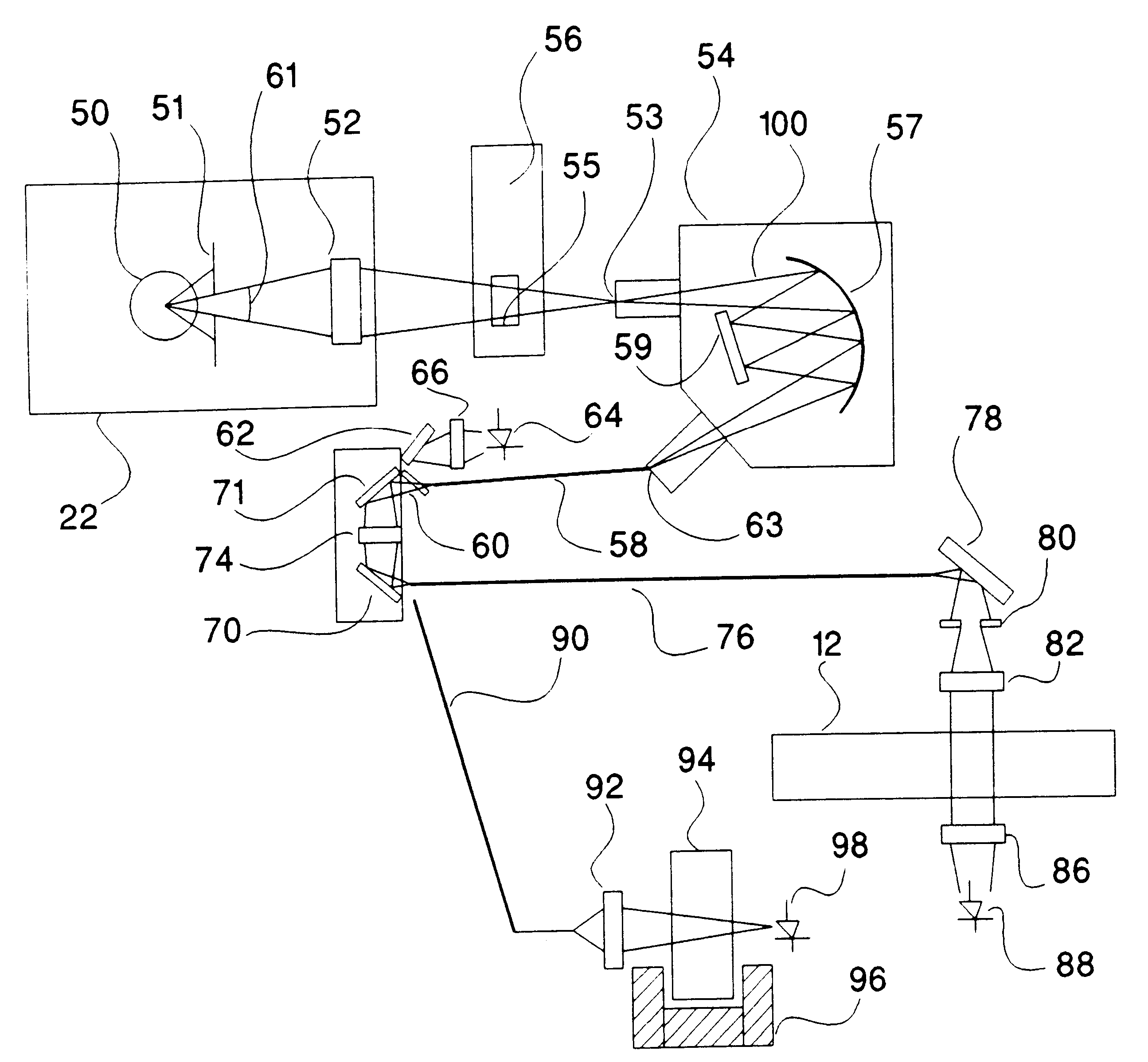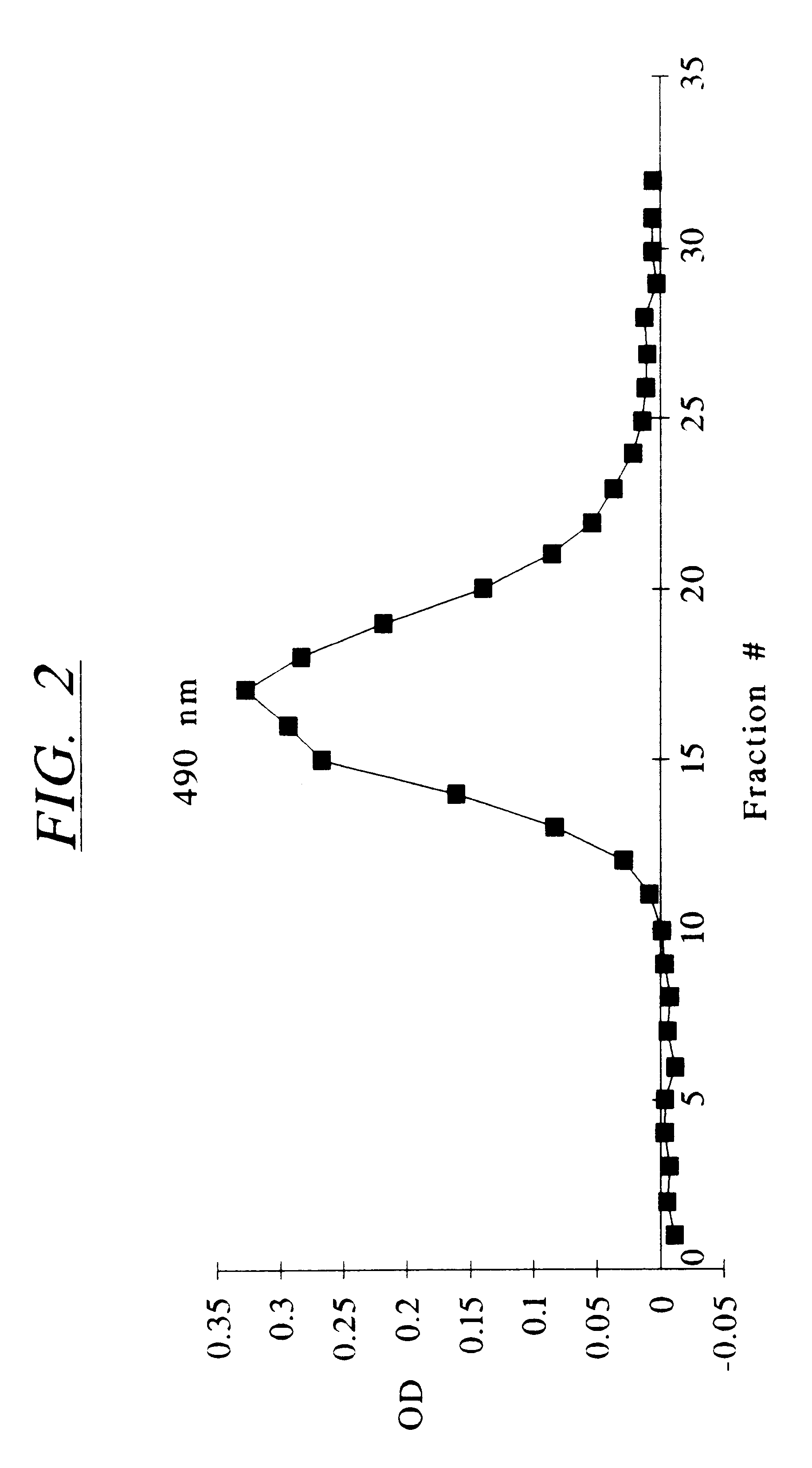Determination of light absorption pathlength in a vertical-beam photometer
a technology of light absorption pathlength and photometer, which is applied in the field of photometry, can solve the problems of difficult reproducibility control, large error in the determination of either relative optical pathlength or the concentration of analytes in unknown optical vessels, and the existence of undefined light absorption pathlength in vertical-beam photometers
- Summary
- Abstract
- Description
- Claims
- Application Information
AI Technical Summary
Problems solved by technology
Method used
Image
Examples
example 2
The method described in this example allows measurements of optical pathlength with mixtures of aqueous and nonaqueous solvents. It also provides for correction when substances, other than water, tl at may absorb at the NIR wavelengths selected to monitor optical pathlength in vertical-beam photometry are present in the solvent. In this example, the NIR wavelength difference, A.sub.970 -A.sub.900, is used to monitor pathlength in aqueous samples. Alternatively, the "pseudo-isobestic pairs," described above provide superior results under certain conditions. For example, the (A.sub.1000 -A.sub.900) pair will provide superior results with silicon photodetectors when the light absorption pathlength is in excess of about 0.4 cm. because in this case an absorbance value of about 0.060 will be obtained. The (A.sub.1185 -A.sub.1100) pair will provide superior results when a vertical-beam photometer is used which employs photodetectors sensitive to light at wavelengths of 1100 and 1185 nanom...
example 3
The method described in this example may be employed with any solvent, including solvents substantially free of water. For this method the absorbance spectrum of the desired solvent is determined in the NIR. Two wavelengths are then selected, a first wavelength near an absorbance maximum, denoted as A.sub.max, of the solvent; and a second wavelength near an absorbance minimum denoted as A.sub.min, of the solvent. The difference in absorbance of samples at the first and second wavelengths, A.sub.max -A.sub.min, should preferably be selected to be between 0.050 and 5.0. It is particularly preferred that the value of A.sub.max -A.sub.min be selected to be between 0.1 and 1.0. The method is conducted as follows:
1A. Load the solvent employed to dissolve the analyte into a cuvette of known optical pathlength, for example, a 1 cm optical path cuvette. This optical pathlength is known as the Solvent Pathlength. Place the cuvette in a photometer and measure A.sub.max -A.sub.min. This paramet...
example 4
The data established in Example 1 above were used to determine the relationship between Light Absorption Pathlength and Sanple Volume in the Nunclon.TM. Delta 96-well, flat-bottom multi-assay plates utilized in that Example. Measurements of A.sub.970 -A.sub.900 were performed on six different chromophoric analytes, Acid Orange 8, Acid Orange 74, Azure B, Direct Yellow 62, Durkee Yellow Food Color, and Schilling Blue Food Color, in aqueous solvent. The sample solutions were dispensed into the wells of the multi-assay plate at either 350, 300, 250, 200, 150, or 100 .mu.l sample volume per well. Each sample and volume combination was tested in 8 replicate wells of the microplate.
The values of A.sub.970 -A.sub.970 obtained experimentally were used to determine Light Absorption (i.e., optical) Pathlength for each well according to Eq. 2. FIG. 1 shows the volume of sample pipetted into each well vs. the mean Light Absorption Pathlength so determined and averaged for all wells of a given v...
PUM
 Login to View More
Login to View More Abstract
Description
Claims
Application Information
 Login to View More
Login to View More - R&D
- Intellectual Property
- Life Sciences
- Materials
- Tech Scout
- Unparalleled Data Quality
- Higher Quality Content
- 60% Fewer Hallucinations
Browse by: Latest US Patents, China's latest patents, Technical Efficacy Thesaurus, Application Domain, Technology Topic, Popular Technical Reports.
© 2025 PatSnap. All rights reserved.Legal|Privacy policy|Modern Slavery Act Transparency Statement|Sitemap|About US| Contact US: help@patsnap.com



